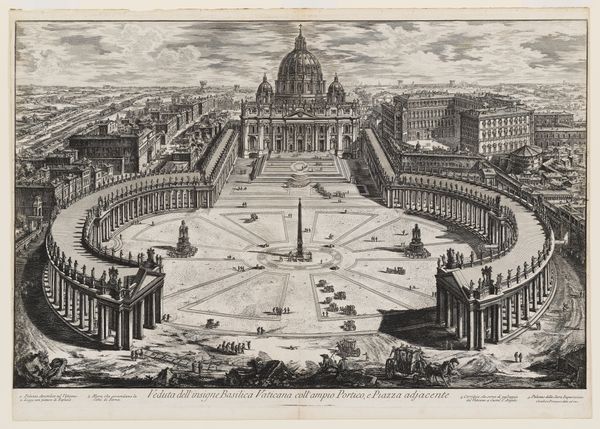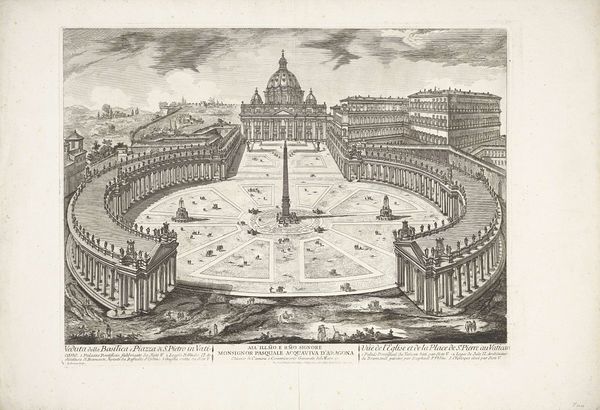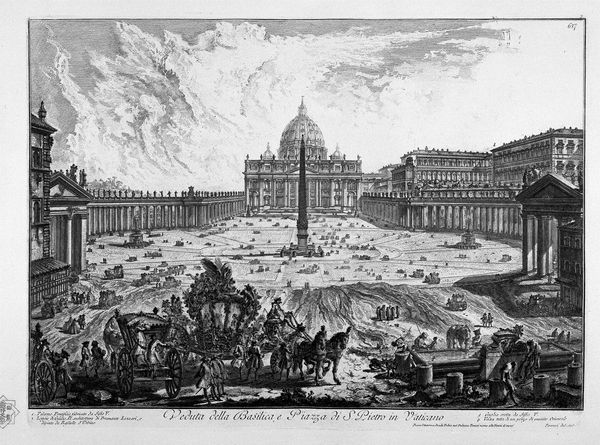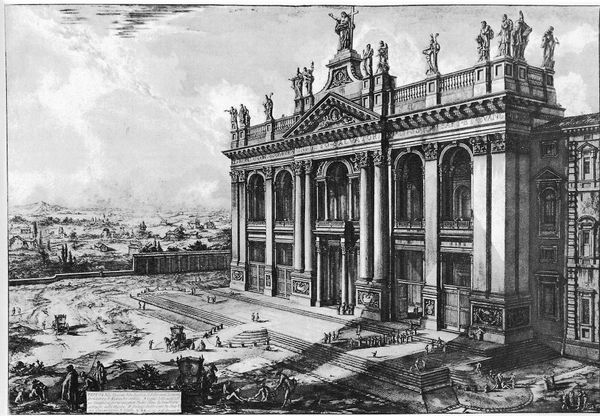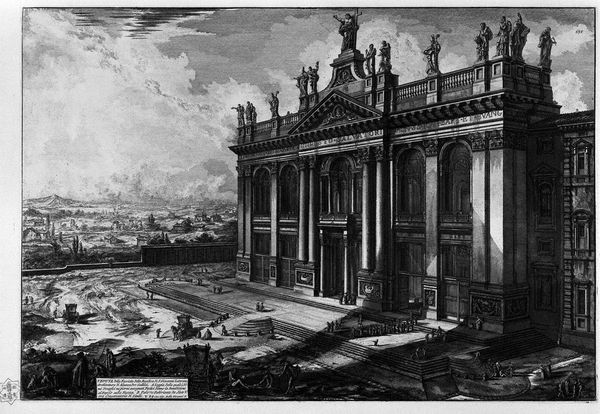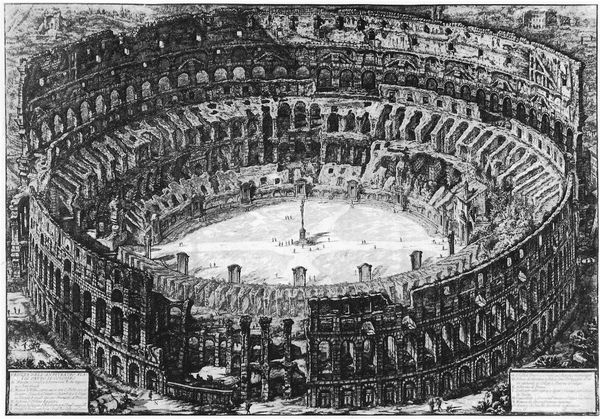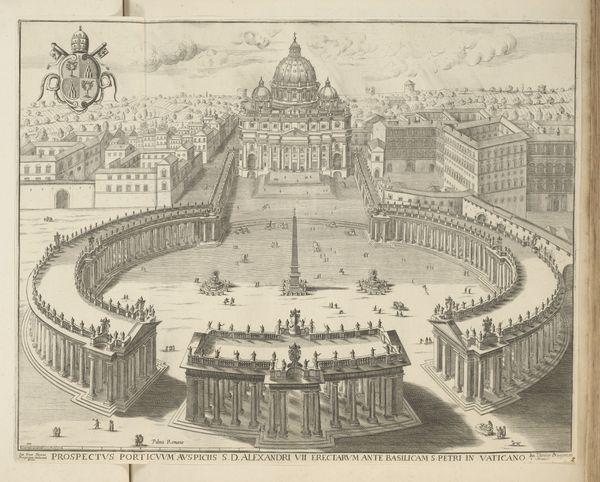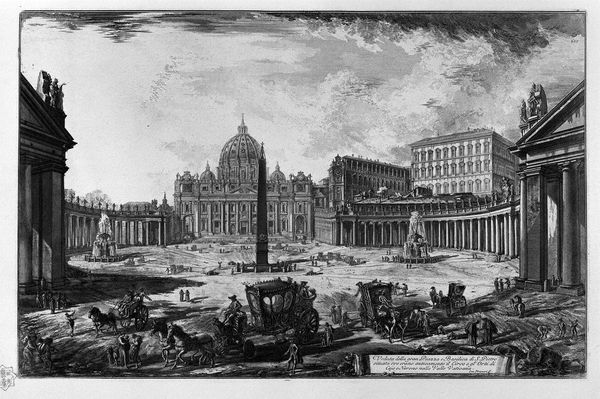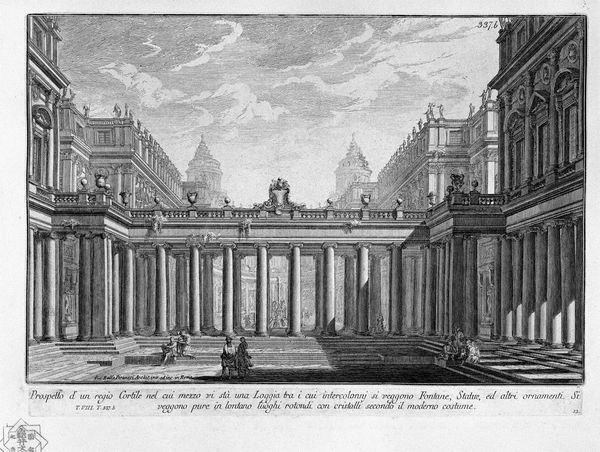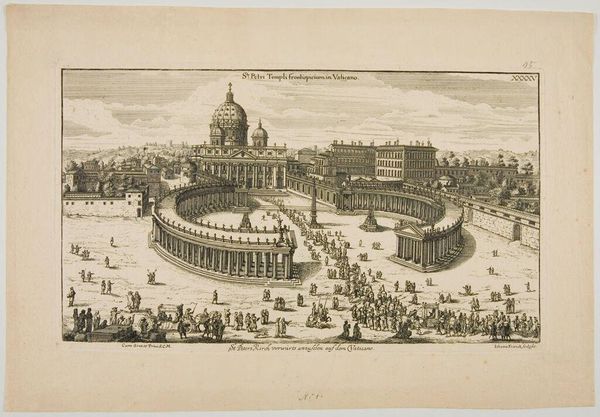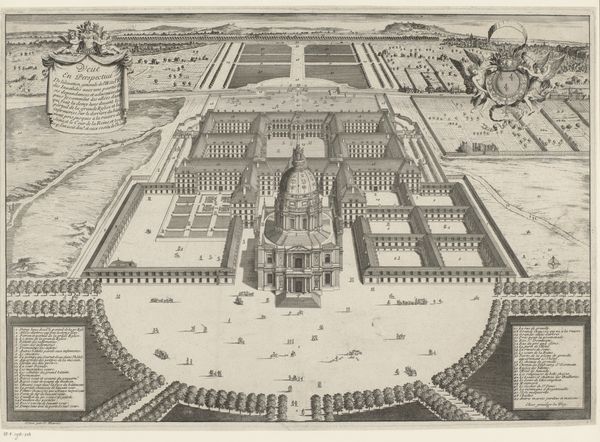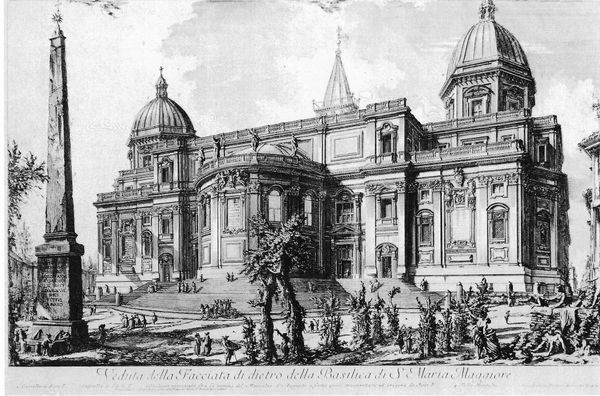
print, etching, engraving, architecture
#
baroque
# print
#
etching
#
old engraving style
#
holy-places
#
perspective
#
romanesque
#
column
#
cityscape
#
italian-renaissance
#
engraving
#
architecture
Copyright: Public domain
This print of St. Peter's Square in Rome was made by Giovanni Battista Piranesi using etching, a printmaking technique that relies on the corrosive properties of acid. The image is made by drawing with a sharp needle through a wax ground, then bathing the plate in acid to bite away the exposed lines. Consider the material reality of this process. The physical labor of preparing the plate, drawing the image, and printing each impression. Notice how Piranesi exploits the textural possibilities of etching. The dense, cross-hatched lines that create a sense of depth and shadow and the crisp, precise details of the architecture. These choices weren't just aesthetic, they were fundamental to the commercial success of his prints. Piranesi wasn't just an artist, he was an entrepreneur operating in a burgeoning market for views of Rome among wealthy tourists. His prints were souvenirs, commodities that captured the grandeur of the city for consumption. The very act of creating and distributing these images was deeply embedded in the economic and social life of 18th-century Rome.
Comments
No comments
Be the first to comment and join the conversation on the ultimate creative platform.
